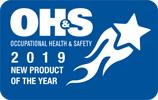It’s time for all of us to pay attention to the research…
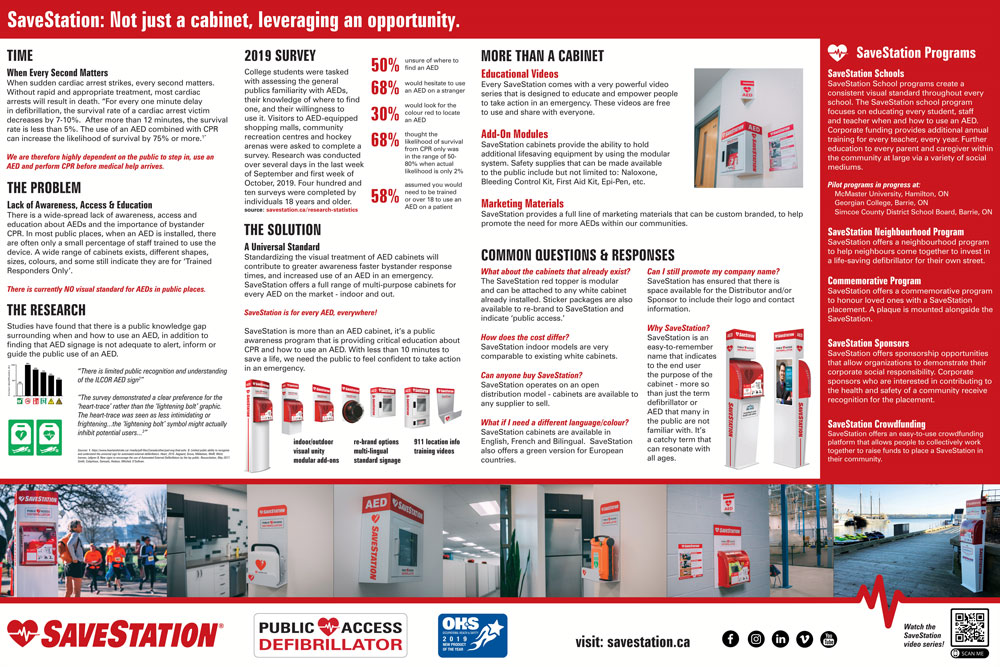
SaveStation: Not just a cabinet, leveraging an opportunity.
Presentation delivered at the 2019 Cardiac Arrest Survival Summit.
December 10-13, 2019 in Seattle, WA

Cardiac Arrest Survival Lower on Weekends
“These results suggest that there is an opportunity to
address sudden cardiac arrests that occur during the weekend by
improving automated external defibrillator awareness, availability and
training and quick response by rescuers.”
“Out-of-hospital cardiac arrest patients are significantly less likely to
survive to hospital admission at weekends compared to weekdays,” the
researchers wrote in an abstract. “Further analysis on the availability of
public access defibrillators at professional and recreational locations and
availability of trained medical rescuers at the weekend vs. weekdays could
account for the differences observed.” – by Scott Buzby
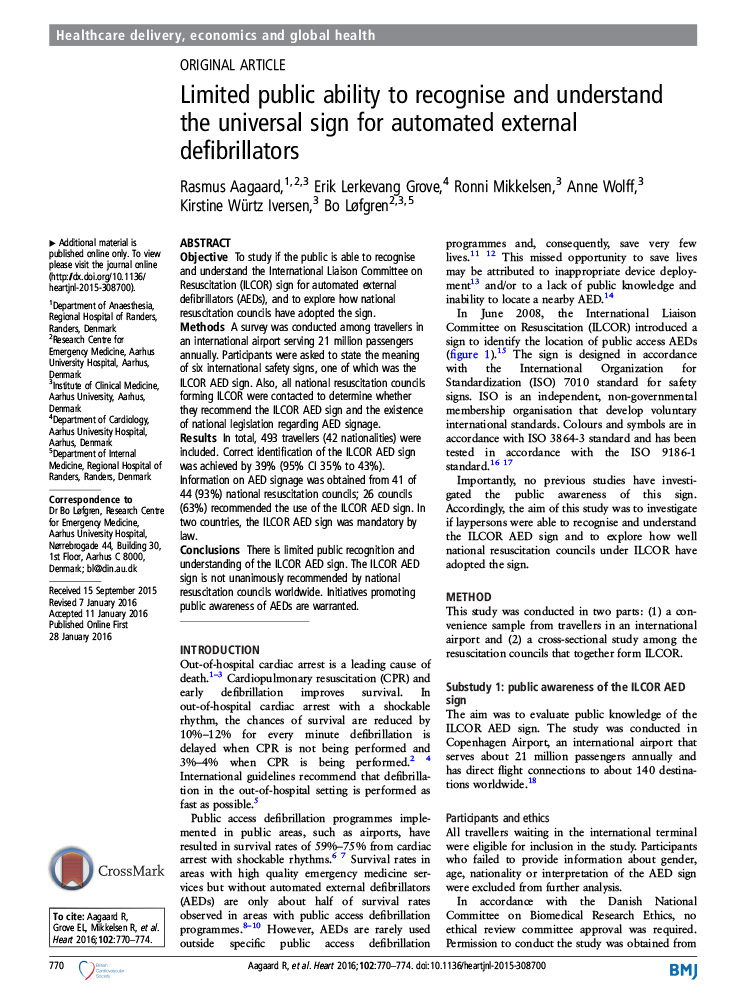
Limited public ability to recognise and understand the universal sign for automated external defibrillators
Rasmus Aagaard, Erik Lerkevang Grove, Ronni Mikkelsen, Anne Wolff, Kirstine Würtz Iversen, Bo Løfgren
“There is limited public recognition and understanding of the ILCOR AED sign. The ILCOR AED sign is not unanimously recommended by national resuscitation councils worldwide. Initiatives promoting public awareness of AEDs are warranted.“
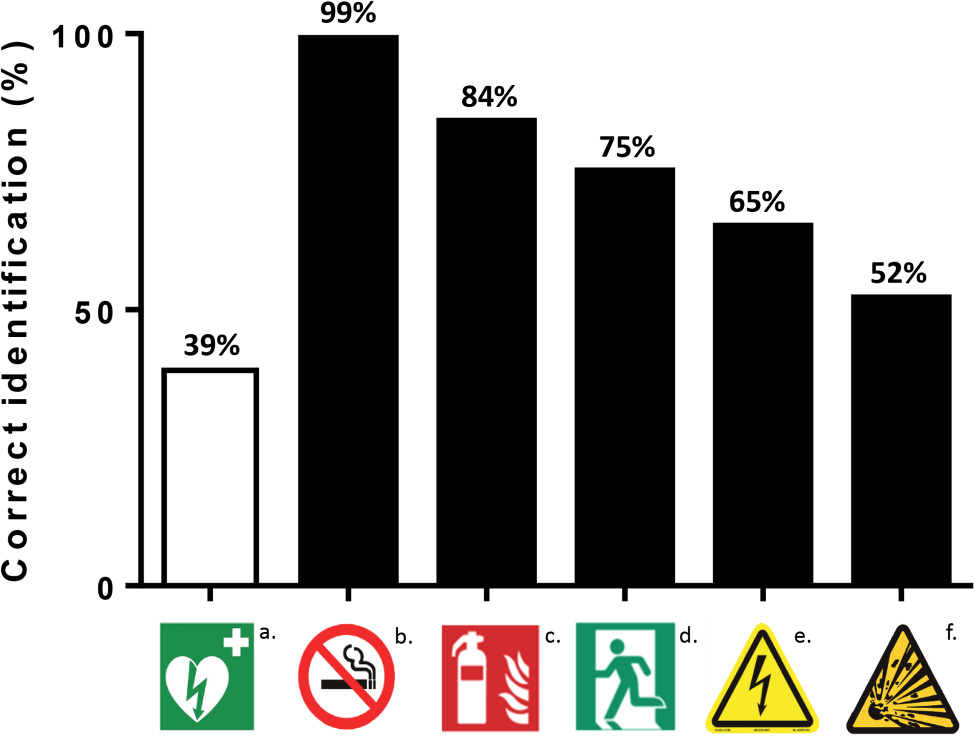
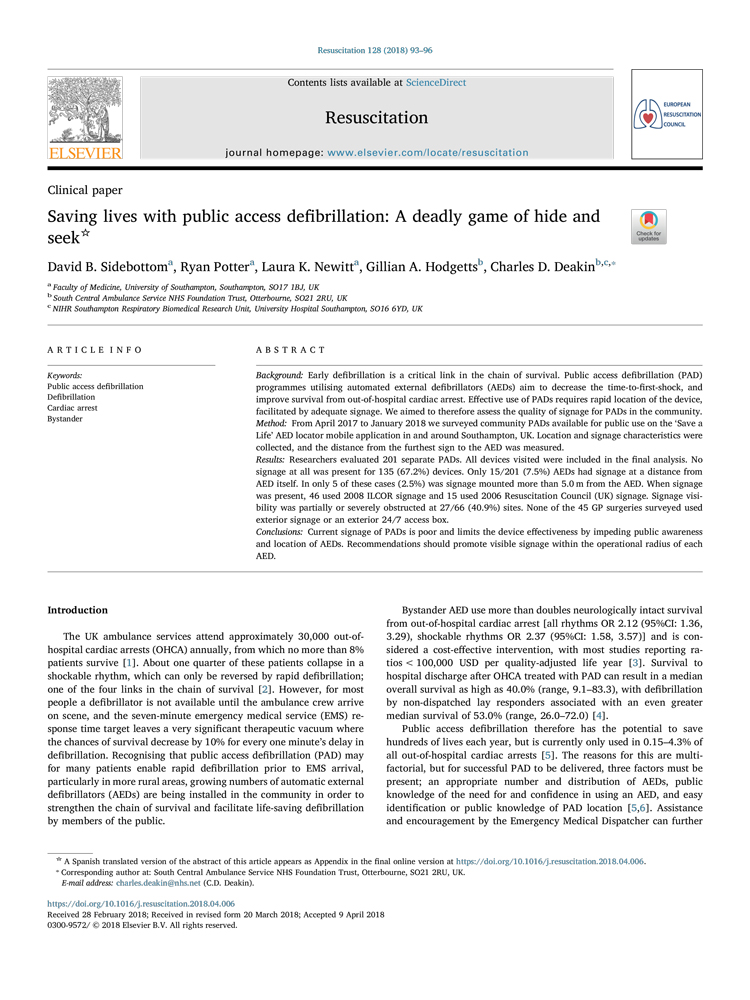
Resuscitation, July 2018
Saving lives with public access defibrillation: A deadly game of hide and seek.
Sidebottom DB, Potter R, Newitt LK, Hodgetts GA, Deakin CD.
“It is important that all AED signs use the same design in order to optimise public familiarity. Standardisation of the type of AED sign used is an important aspect of improving the ability to locate the nearest AEDS.
A common issue was lack of awareness at the venues where AEDS were located. In one sports centre, staff were unaware of the AED location. ….. One investigator waited for over 10 min at a major shopping centre before the first aider who knew where the AED was, could be located. Frequently, devices were locked inside store rooms (or similar), which delayed their identification.
PADS mostly lack adequate signage. This is likely to both limit the knowledge of citizens that a PAD is available in their vicinity and limit the ability to rapidly locate a PAD when required. This will directly limit the effectiveness of any community PAD programme. We make recommendations to improve PAD signage so that each one is rapidly identifiable anywhere within its operational radius.”
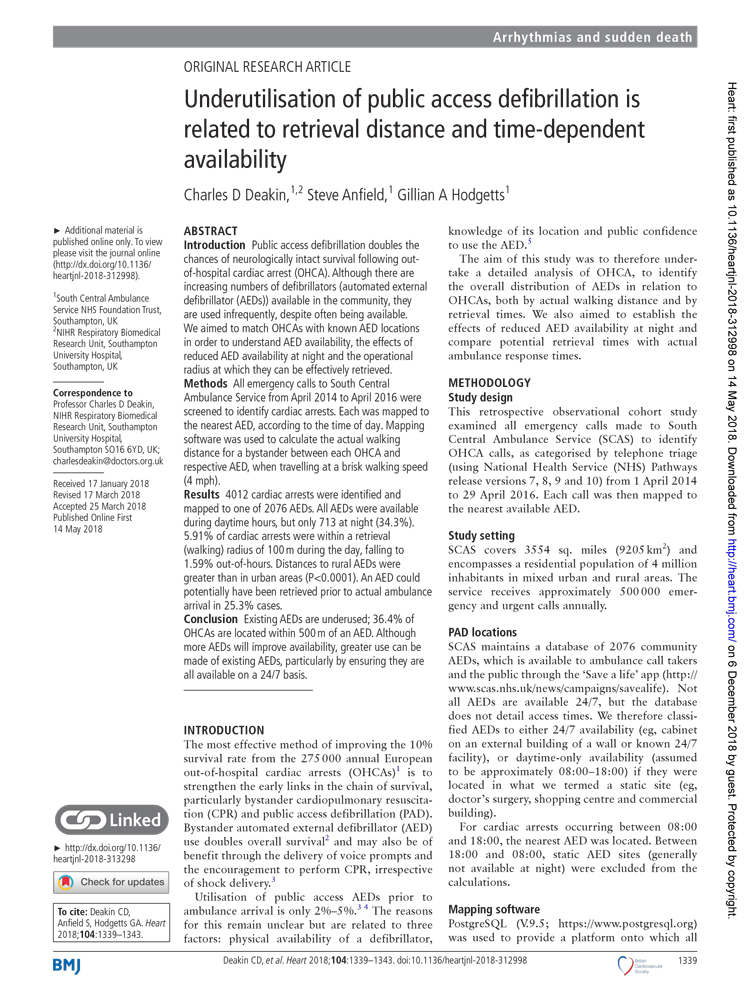
Heart, Aug 2018
Underutilisation of public access defibrillation is related to retrieval distance and time-dependent availability.
Deakin CD, Anfield, Hodgetts
“Utilisation of public access AEDs prior to ambulance arrival is only 2% – 5%. The reasons for this remain unclear but are related to three factors: physical availability of a defibrillator, knowledge of its location and public confidence to use the AED…”

Resuscitation, May 2017
New signs to encourage the use of Automated External Defibrillators by the lay public.
Smith, Colquhoun, Samuels, Hodson, Mitchell, O’Sullivan.
“…and if defibrillation is performed within two minutes of collapse survival rates of more than 70% are possible. Many barriers to PAD relate to poor awareness of what PAD is, and where the nearest public-access AED can be located. Current signage used to indicate the location of a public-access AED may be one important factor in this.”

Resuscitation, July 2018
Saving lives with public access defibrillation: A deadly game of hide and seek.
Sidebottom DB, Potter R, Newitt LK, Hodgetts GA, Deakin CD.
“With the time critical nature of defibrillation, even relatively small delays in retrieving an AED may adversely affect outcome. Survival from OHCA more than halves after only a four minute delay in defibrillation, so even a short delay spent locating an AED will result in significantly decreased survival. The fundamental lack of signage was surprising and will serve to significantly limit the potential effectiveness of any PAD site… When directional signs are placed, it is important to consider their overall visibility from no more than 180 degrees. We found that almost half of the PAD signs had partially or severely obstructed visibility, often being obstructed by vegetation or placed in a corner, which drastically reduced the effectiveness of the signage.”
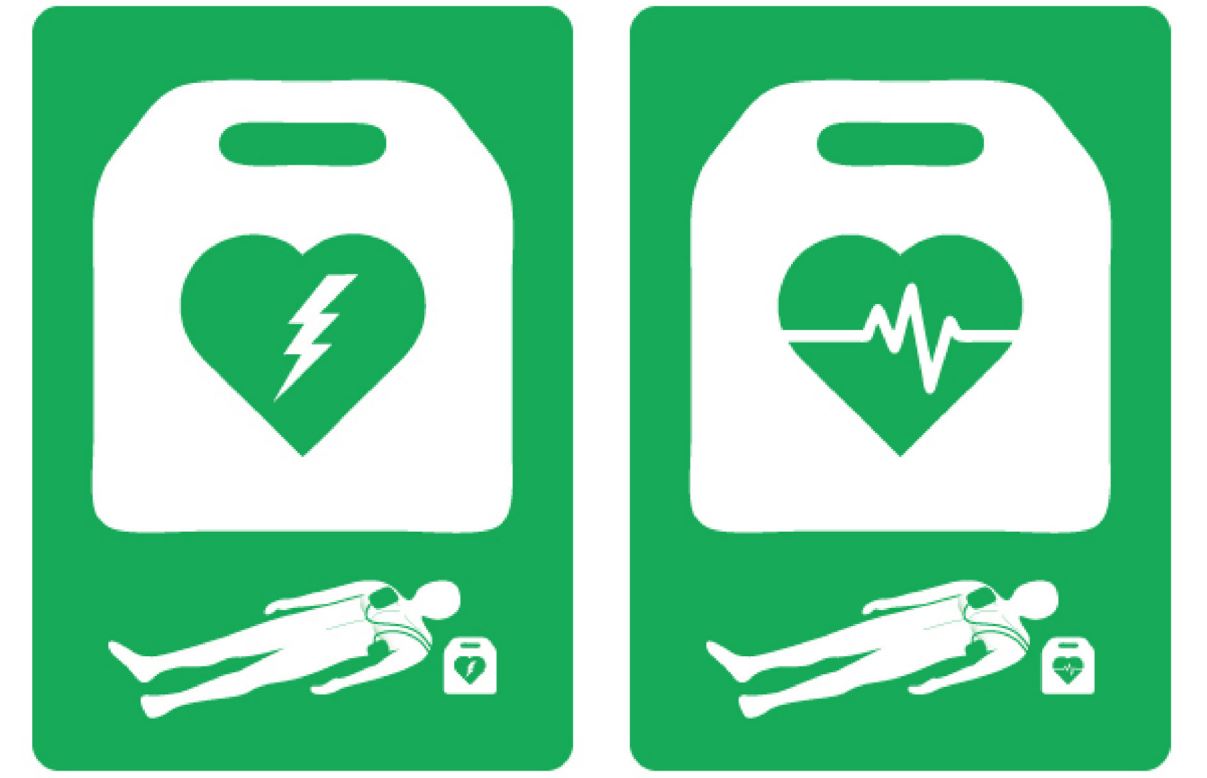
Resuscitation, May 2017
New signs to encourage the use of Automated External Defibrillators by the lay public.
Smith, Colquhoun, Samuels, Hodson, Mitchell, O’Sullivan.
“The current ILCO sign just indicates the location of an AED and provides no encouragement to use the device. The survey demonstrated a clear preference for the ‘heart-trace’ rather than the ‘lightening bolt’ graphic. The heart-trace was seen as less intimidating or frightening. Furthermore, the ‘lightening bolt’ symbol featured in the signs might actual inhibit potential users, as it is very similar to the signs used in many countries to warn about dangerous high-voltage electrical installations.”

